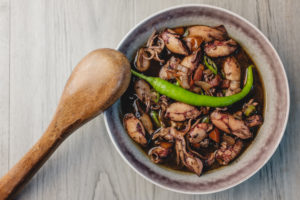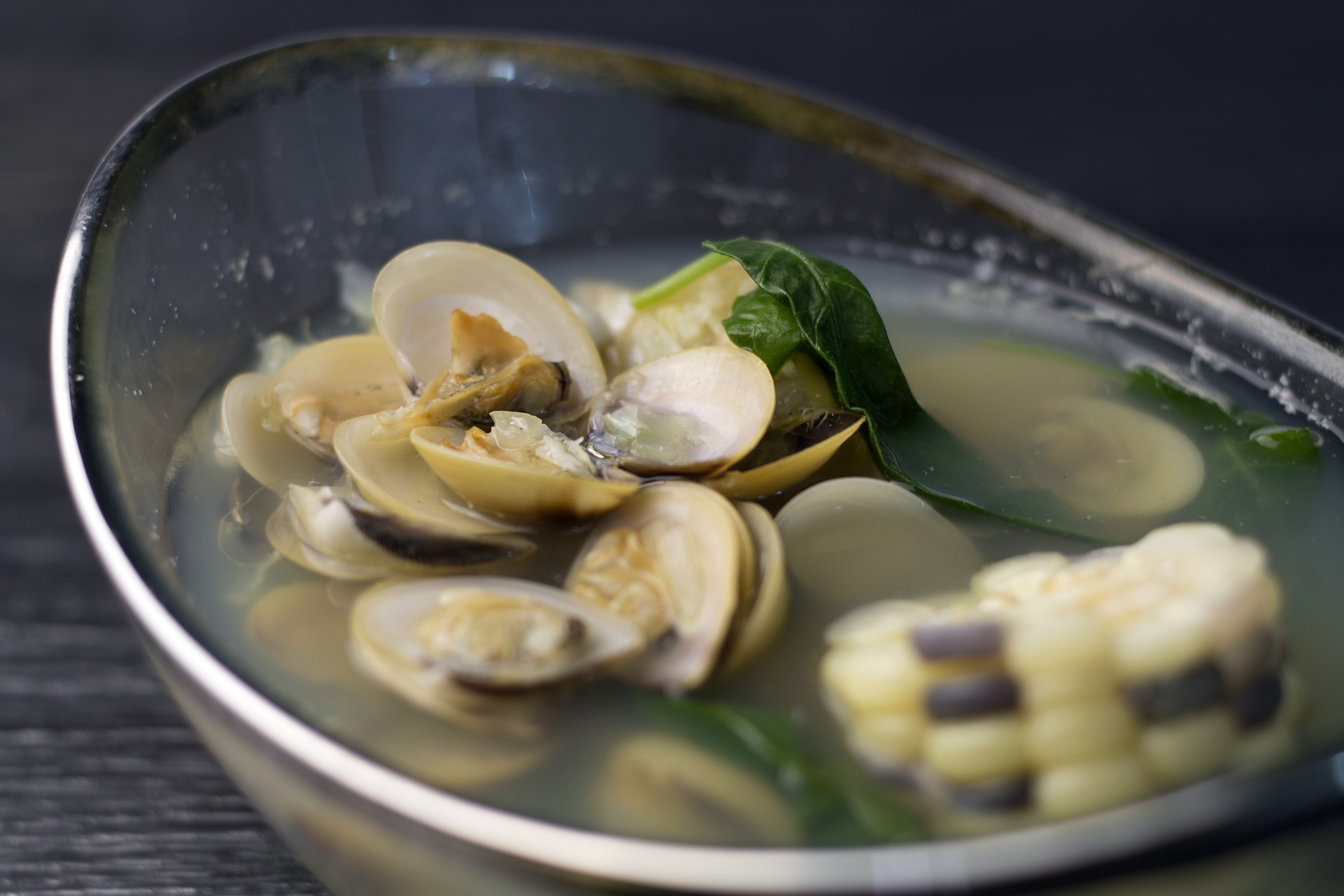Most Pinoys can describe what Kinilaw is. A lot would say that it is a fireless cooking. Cooking the raw meat, fish or seafood using a form of acid, can be from a citrus fruit or vinegar, plus the exciting kick by adding chilis. This is often served as an appetizer or as a “Pulutan” when drinking beer and hard liquors.

There is a folklore for Kinilaw. It is about the king and his royal cook. The story goes when the king was asking his royal cook named Eslaw to cook something different. Eslaw checked the kitchen and found some fresh fish. He rubbed the fish with salt to remove the slime and poured some vinegar. He added the juice of Calamansi to remove the stinky smell and topped with ginger and chillis. The king knew that Eslaw was experimenting something in the kitchen and became excited for the final dish. When it was served, the king was amazed and with their local vernacular, he said, ““Kini Law! Kini akong gipangita. Maayo! Kalami sa pagkaon. Kini Law!” (This is it, Law! This is what I’ve been looking for. Good job! The food is great. This is it, Law!). This is where the famous Kinilaw came. Such a fascinating story, right?
If you would visit different regions in the Philippines, everyone has their own version. The Ilocanos has their “Kilawen.” They add “Papait” or bile juice to round off the flavor. For the Pangasinenses, they use live shrimps with calamansi juice, also known as the “Jumping Salad.” In the Visayan Region, raw meat, seafood and vegetables are used with vinegar and the addition of coconut milk for that sour-creamy taste. Lastly, the Tagalogs, they use fresh dilis.
Kinilaw is a very versatile dish. You can add anything you want. We can even compare it to Ceviche which was popularized by the Spaniards or even the Scandinavian Salmon Gravlax. You see, our Kinilaw may be simple but it is at par with these international dishes.
- 8 pcs Shallots, minced
- 4 Tbsp Ginger, grated
- 3 pcs Green Chilies (Siling pang Sinigang), seeded and sliced
- 1 medium Red Onion, sliced thinly
- 2 pcs Bell Pepper (Red and Green), sliced into thin strips
- 1 kilo Mackarel Fillets (Tanguigue), skin and bone removed, chopped into ¾” cubes
- 2 cups Vinegar (preferably Tuba or Sukang Iloko)
- ¼ cup Calamansi Juice
- 1 Tbsp Calamansi Rind, grated
- 1 cup Coconut Cream
- 1 ½ Tbsp Salt
- 1 tsp Pepper
- ¼ cup Wansuy Leaves (Cilantro), chopped
- According to taste Birds Eye Chili (Labuyo), chopped
- Wash the fish cubes with half of the vinegar (1 cup). This will turn them opaque. Strain and discard the vinegar.
- In a bowl, combine the shallots, ginger, green chillies, calamansi rind and the fish cubes.
- Add in the Vinegar, Calamansi Juice and Coconut Cream and toss. Season with salt and pepper. Refrigerate for 15 minutes.
- Upon serving, top with the onion, bell peppers, wansuy leaves and labuyo.
Other Tips for this recipe :
*Use a nonreactive bowl when mixing and serving the Kilawin to avoid that metallic taste. Use glass or ceramic bowls in preparing.
*Use only the freshest fish available and clean it thoroughly.
*Use native vinegars, made from coconut, sugarcane and sugar palm in making Kilawin to achieve that natural sweet, fruity and sour taste. Regular white vinegar tends to be acrid.
*Tanguigue is the fish commonly used but most of the large fishes can also be used in making Kilawin. You can try using Malasugue (Marlin), Bangus (Milk Fish), Tuna and Espada (Sword Fish).
*Small fishes can also be used such as Tamban (Sardines), Sapsap (Slip Mouth), Dilis (Anchovy) and Salay Salay (Yellow Stripe Scad). Just remove the head and spine and fillet.
*Incase fish are unavailable; you can use oysters, shrimp, and lobsters.
*You can heighten the dish up by adding tomatoes, corn, and local sea weeds. Serve it with crisped up wantons and you got yourself a sophisticated appetizer.
Check out the full video here : https://glebehousemanila.com/maputingcooking/episodes/kinilaw-filipino-cooking/
If you like this recipe please share and Subscribe to our Youtube Channel Here. .
Chris Urbano / Maputing Cooking is a Tagalog Speaking Australian Chef on a mission to bring Filipino Food Global. Filipinos and food conisseurs can find Filipino food recipes, filipino cooking tips and the latest Filipino food news and trends from around the world here at Maputing Cooking.








